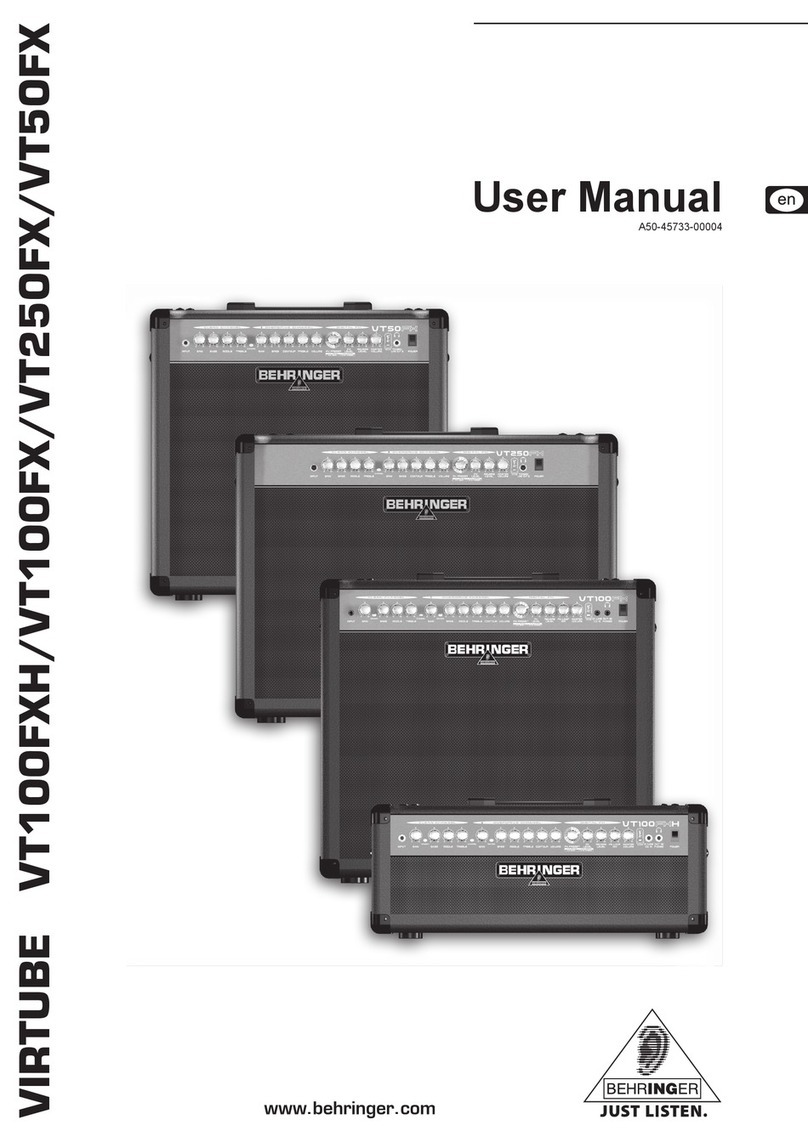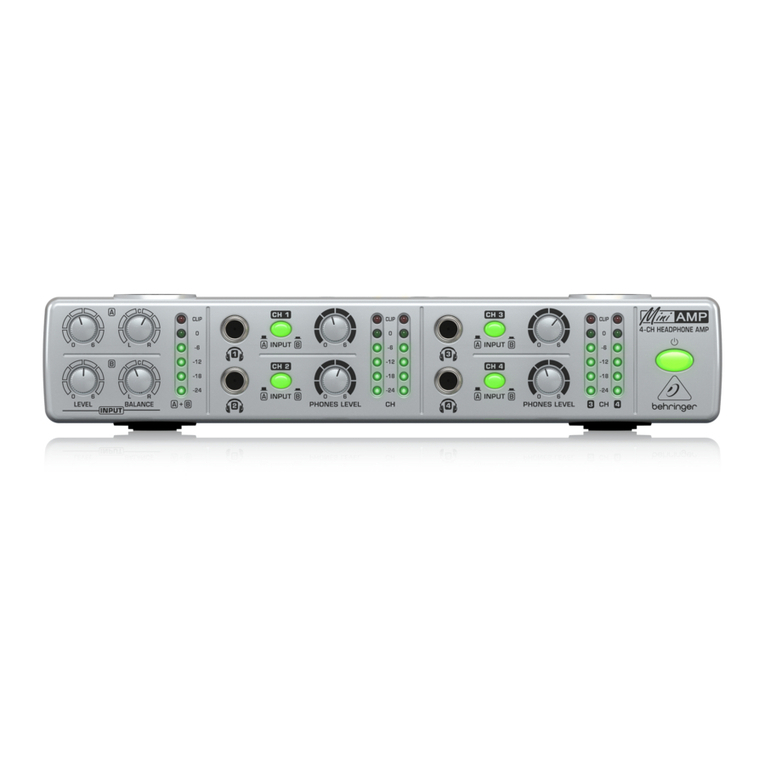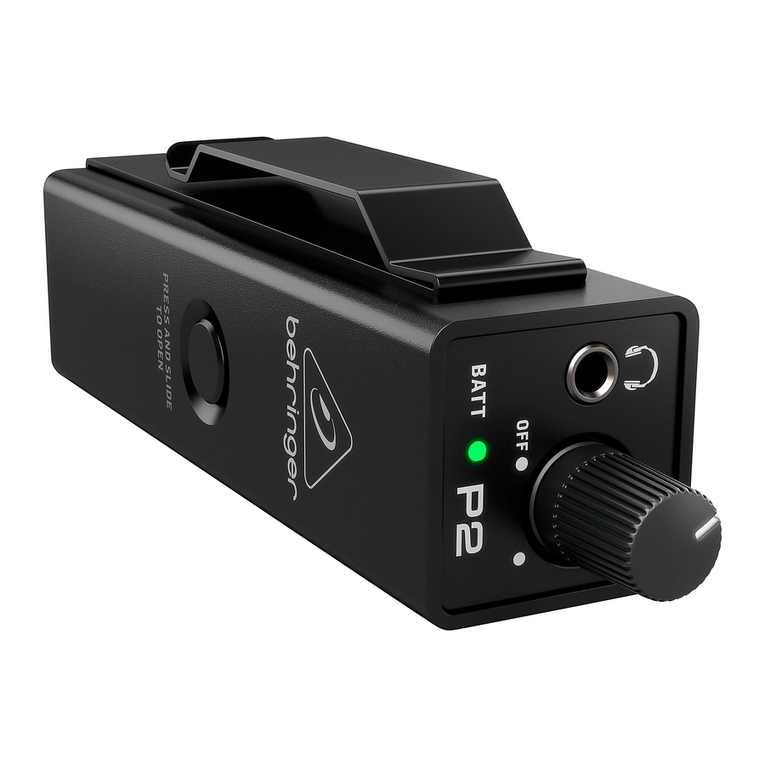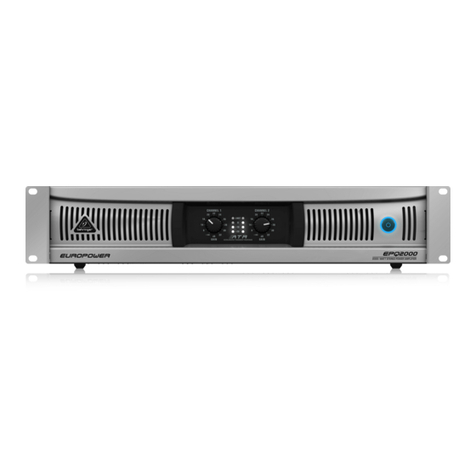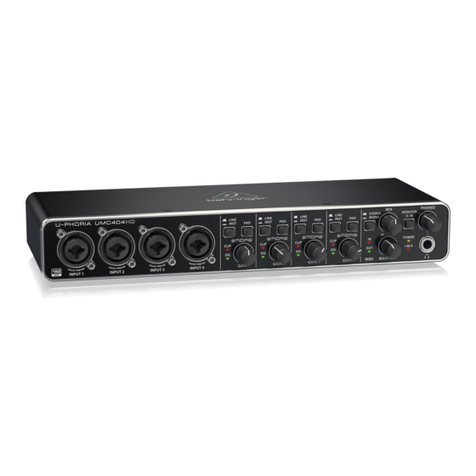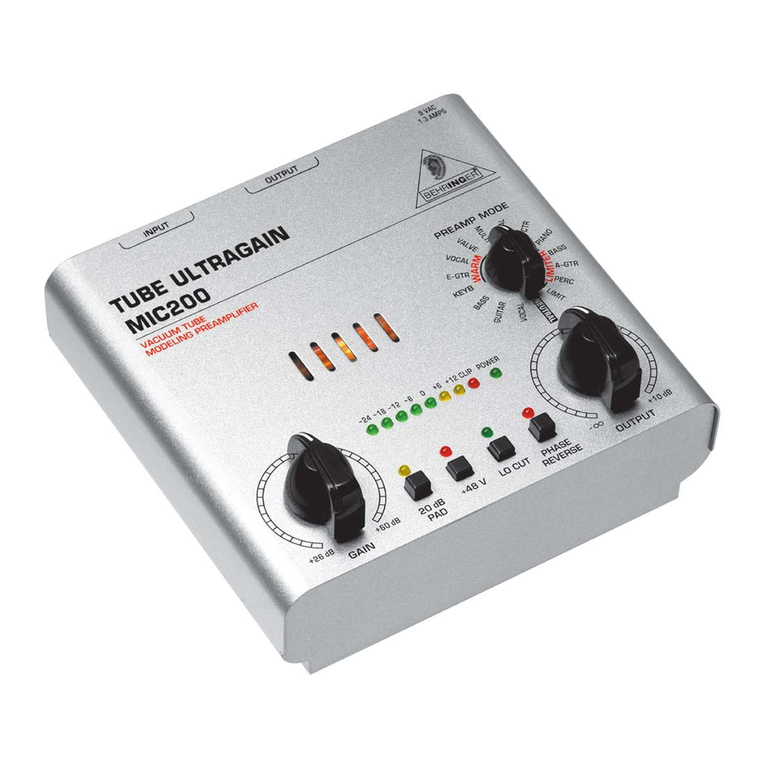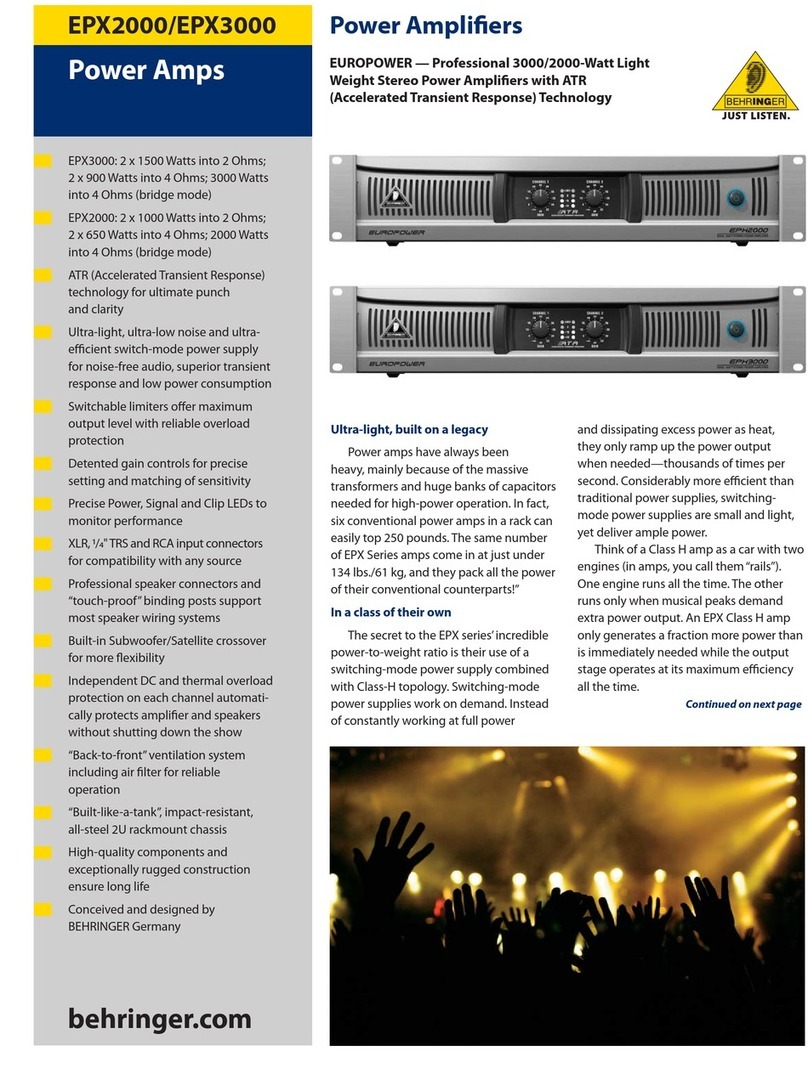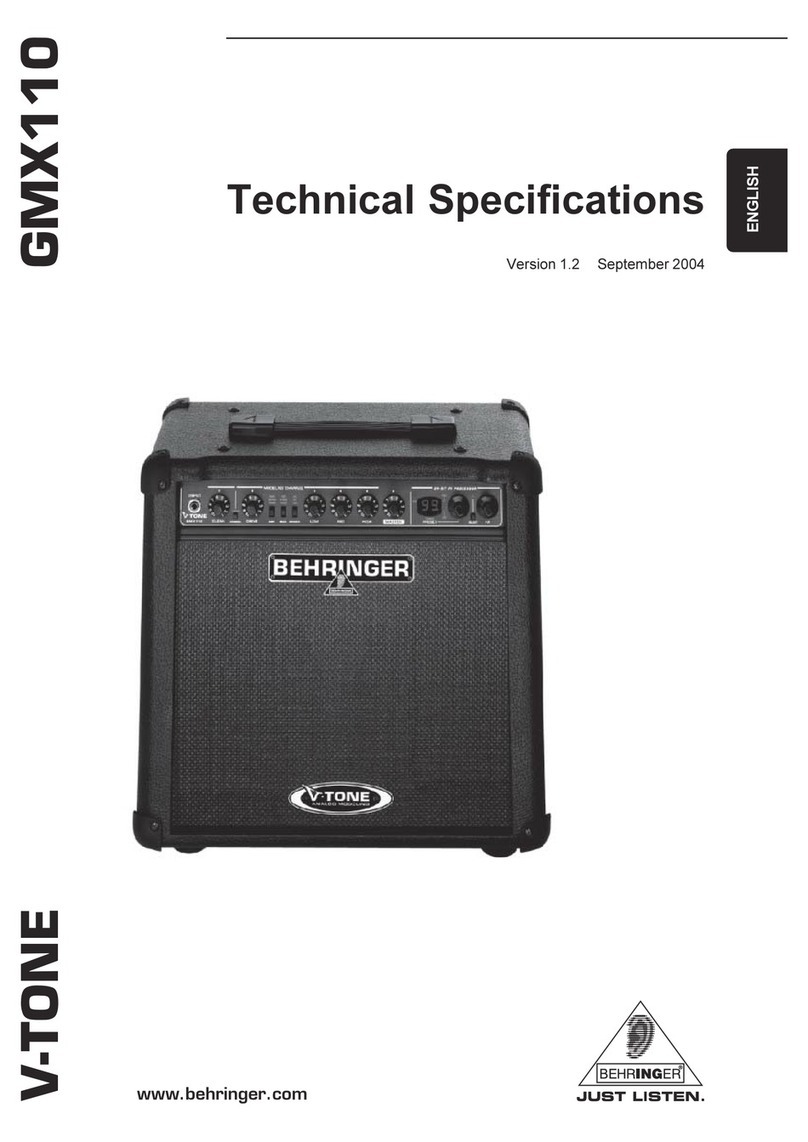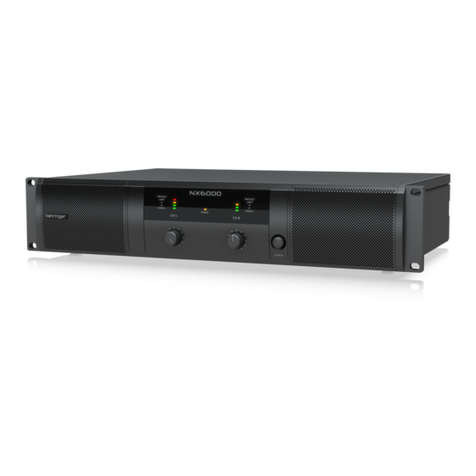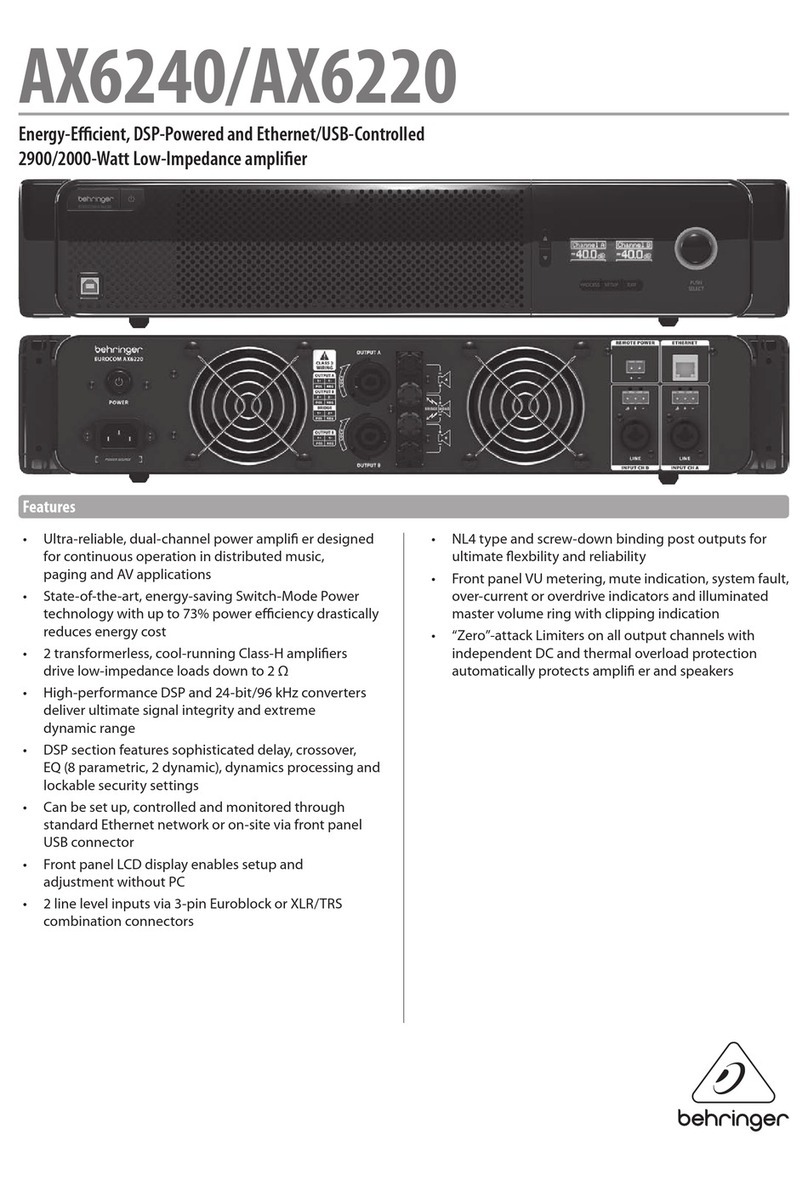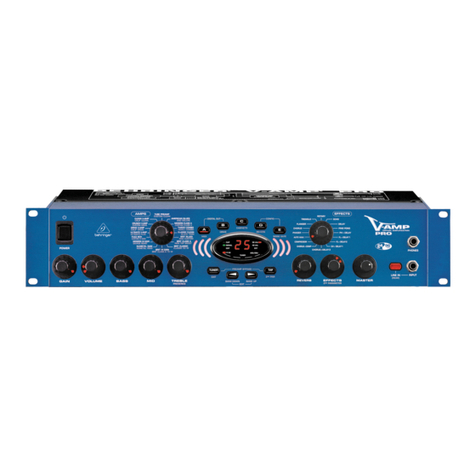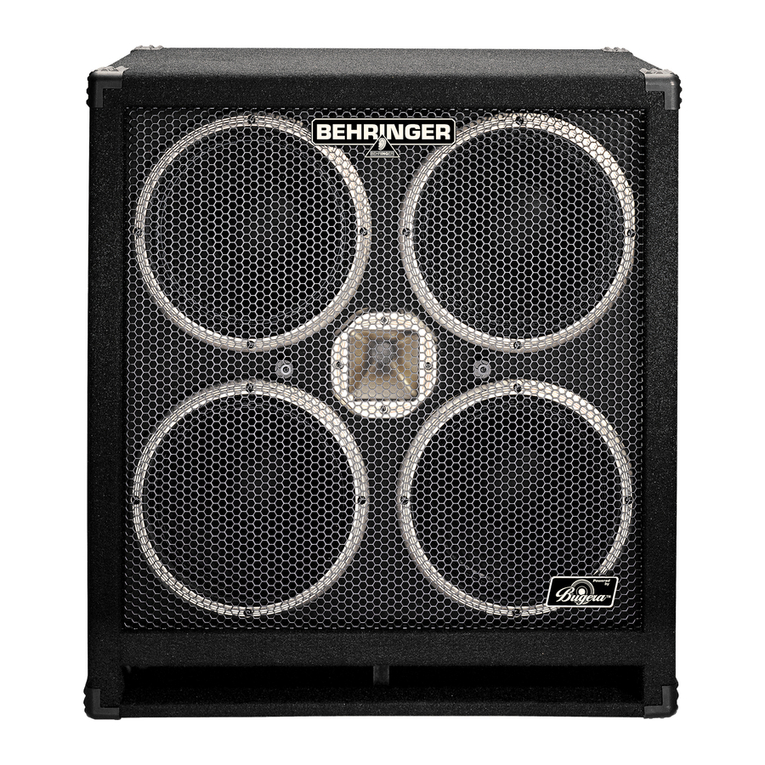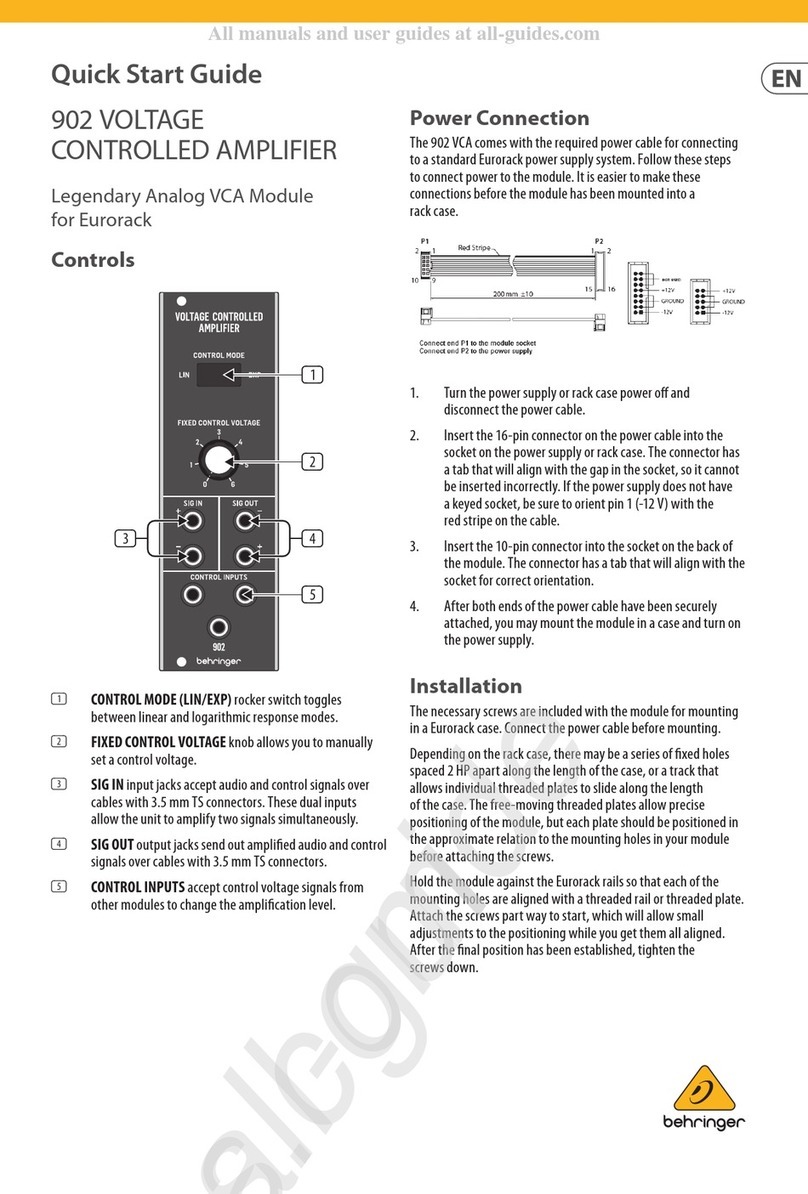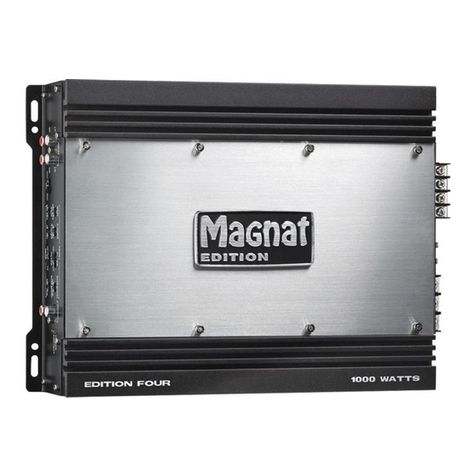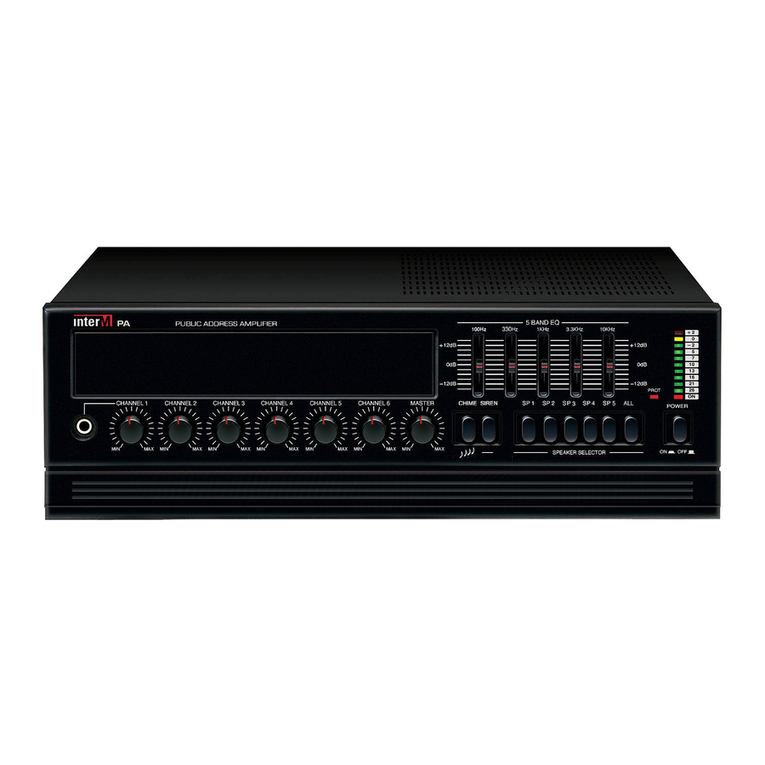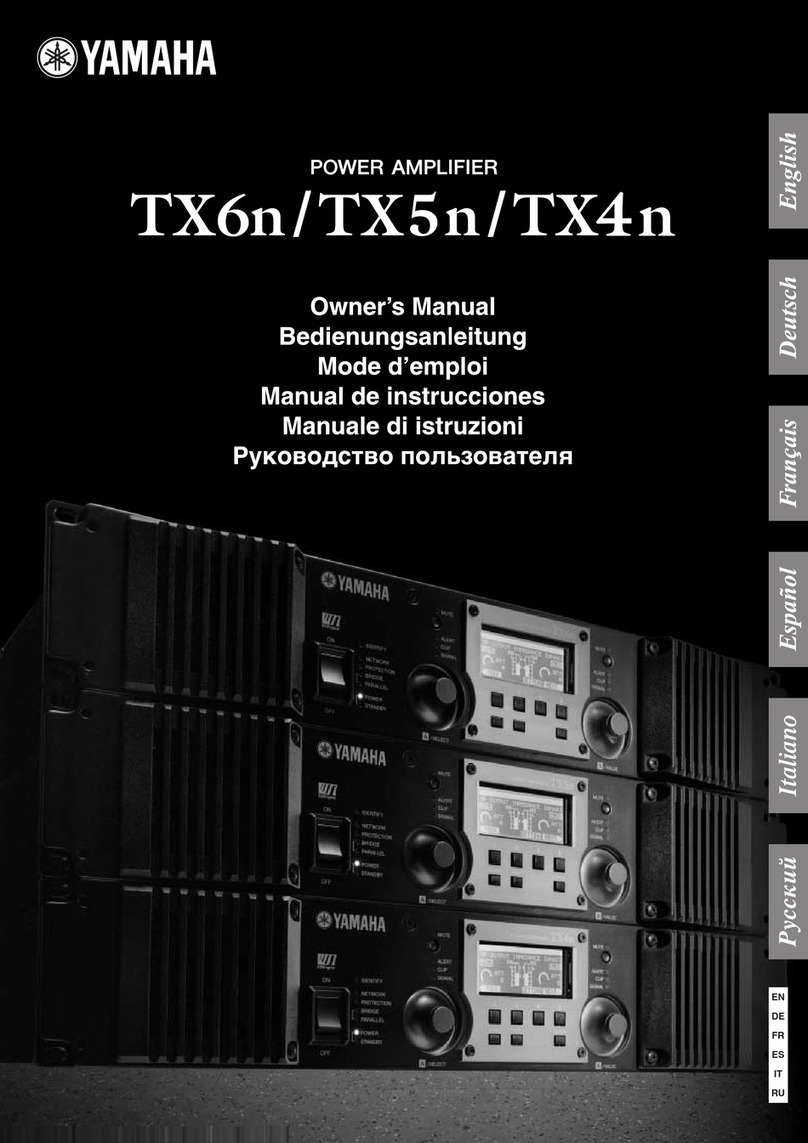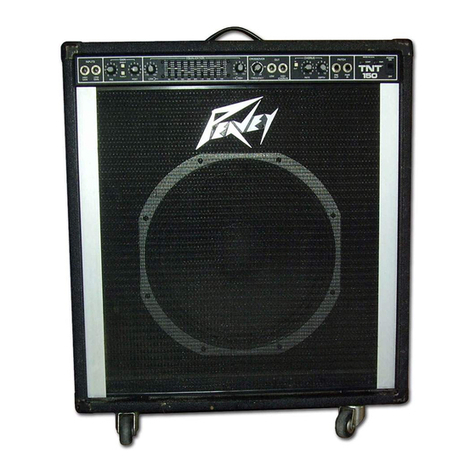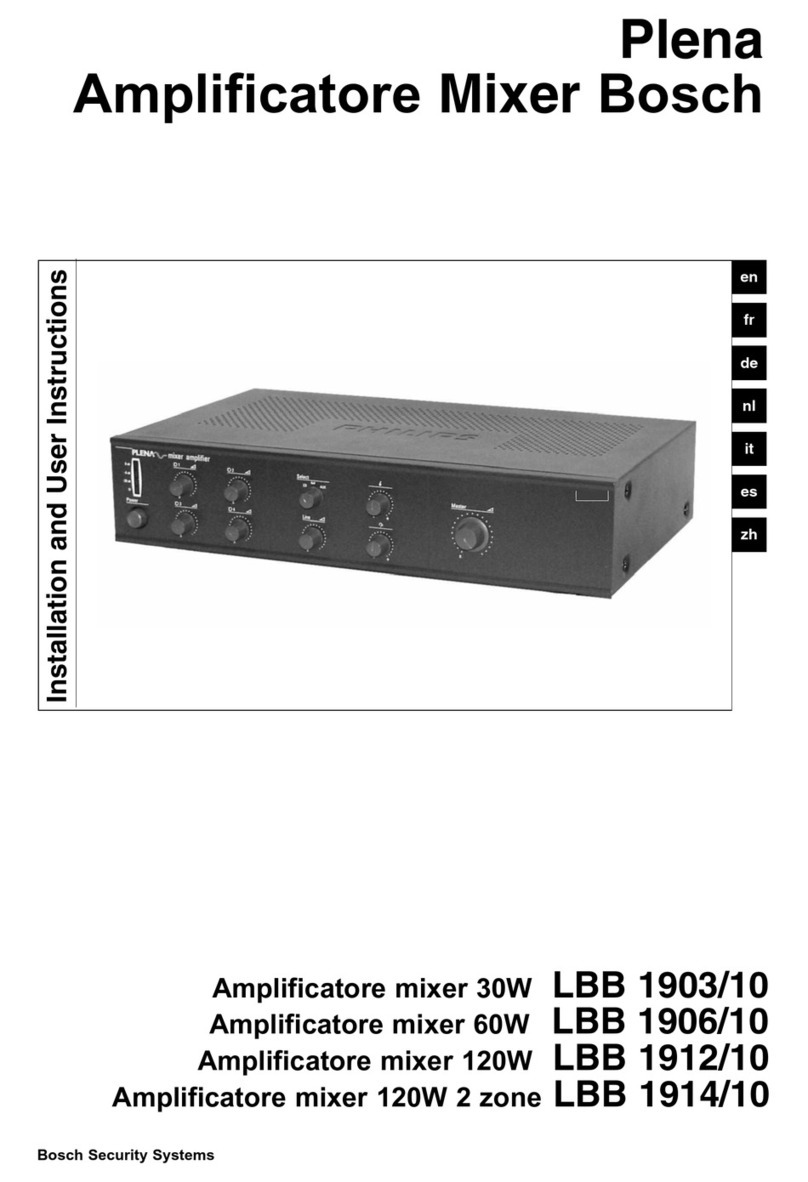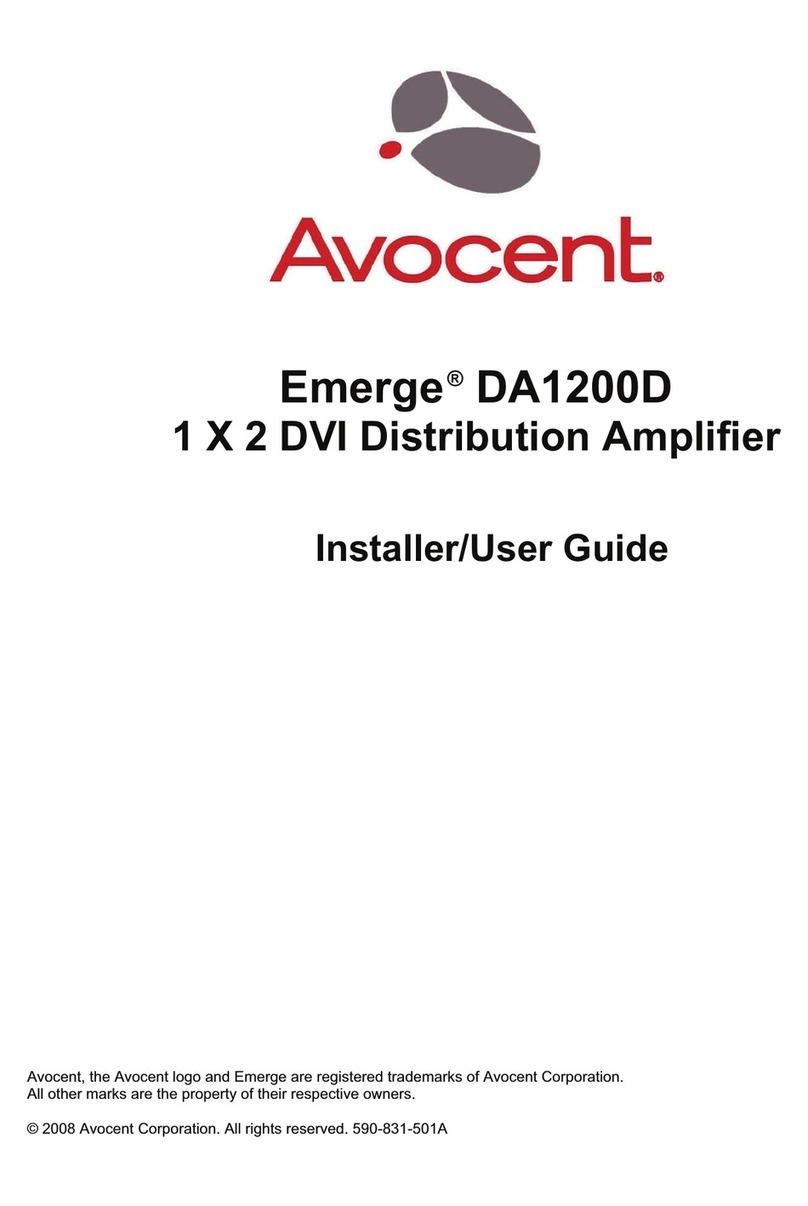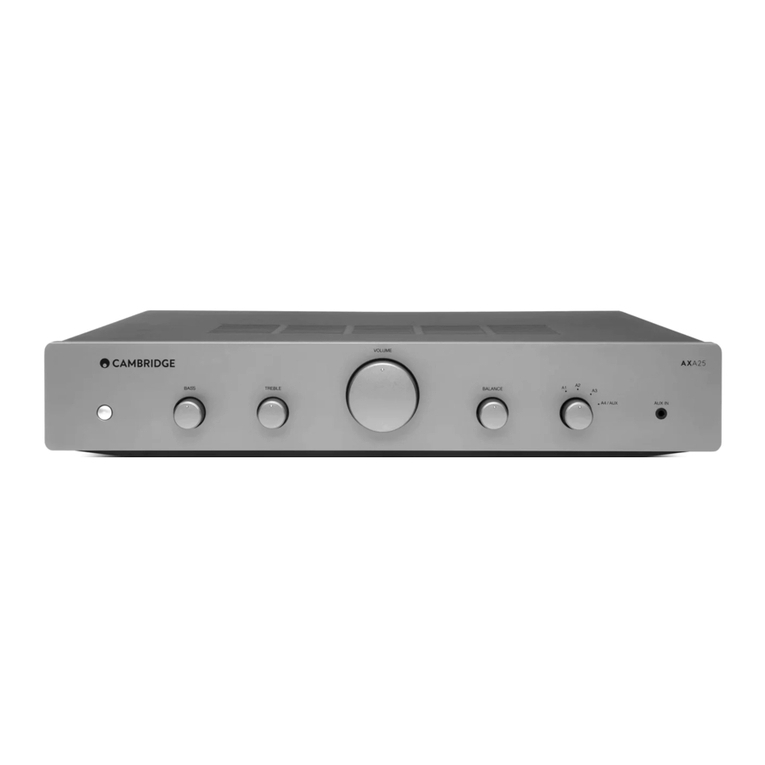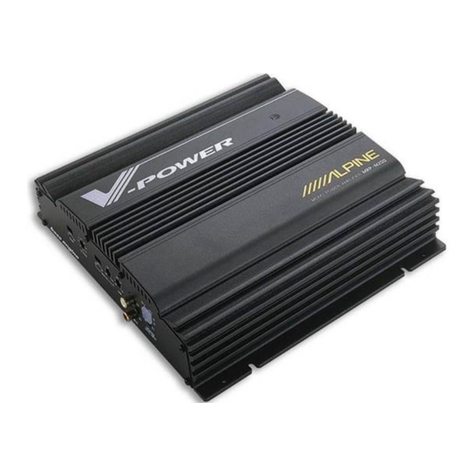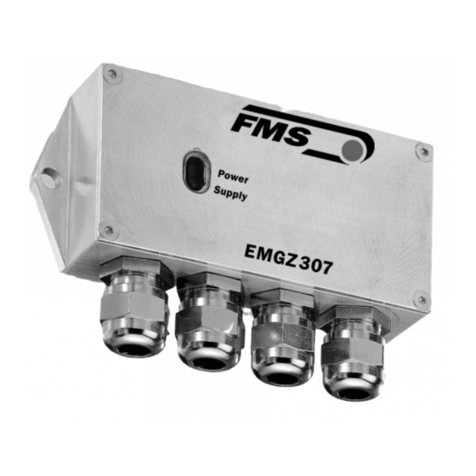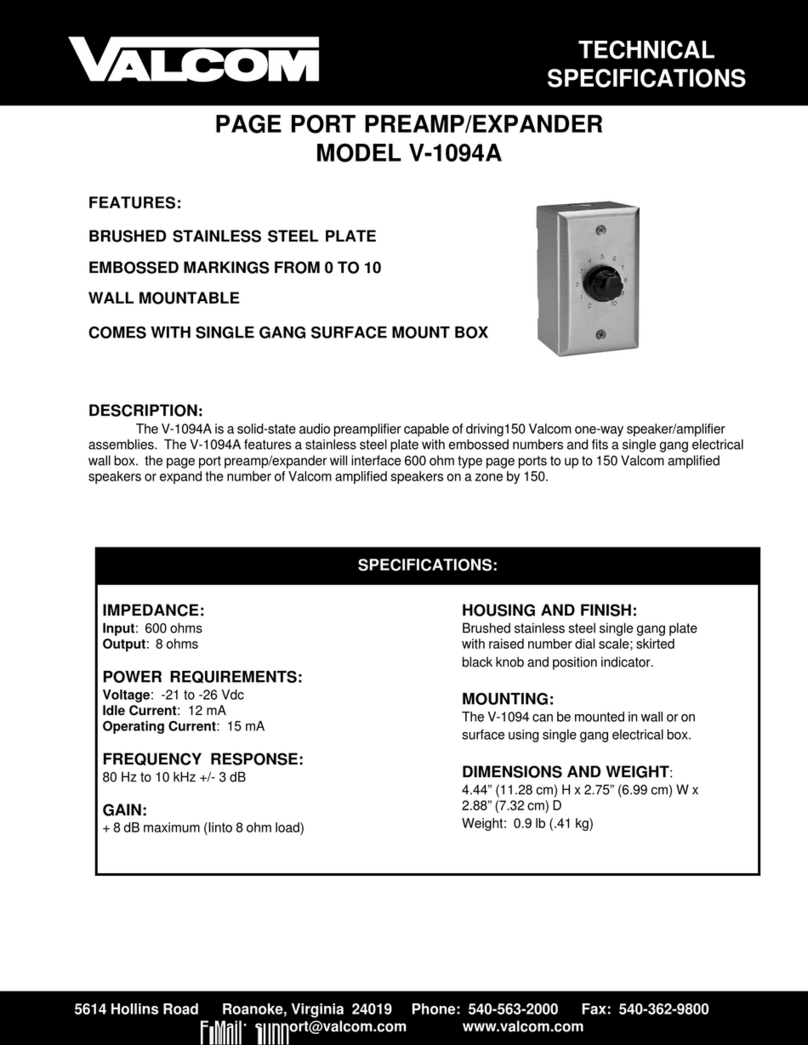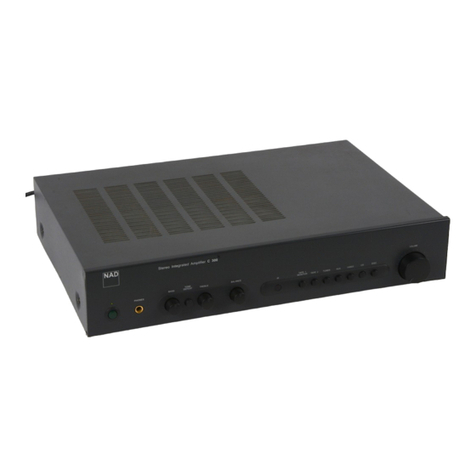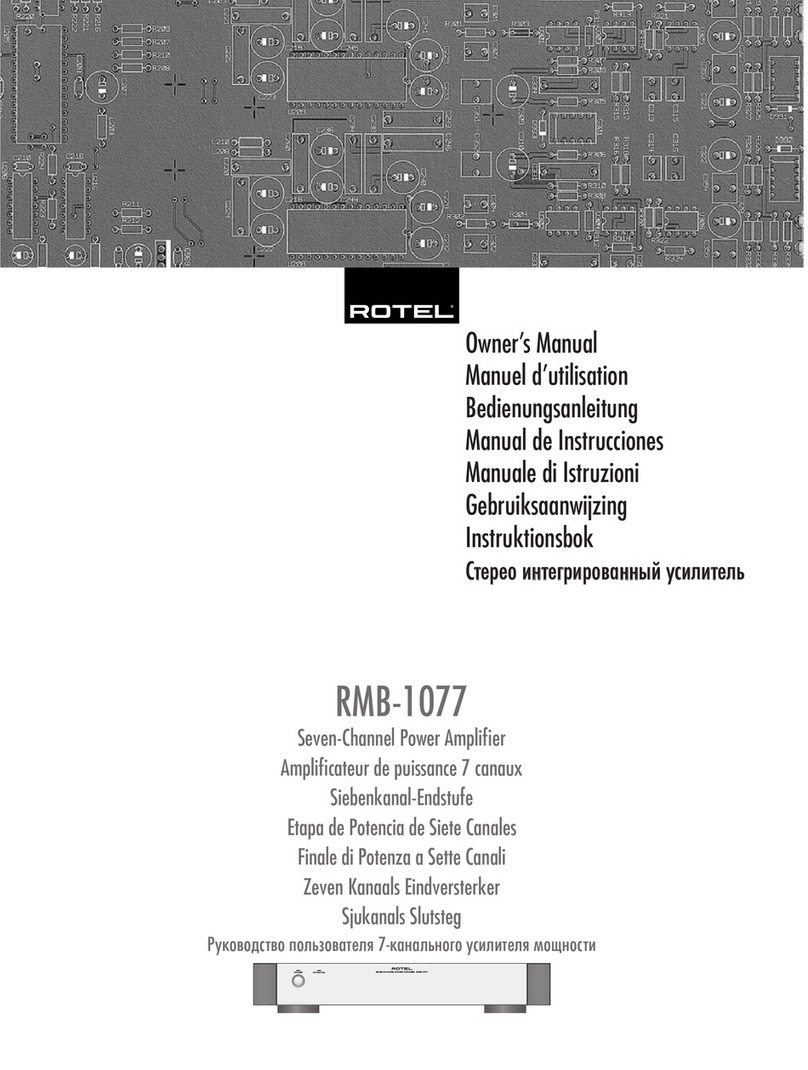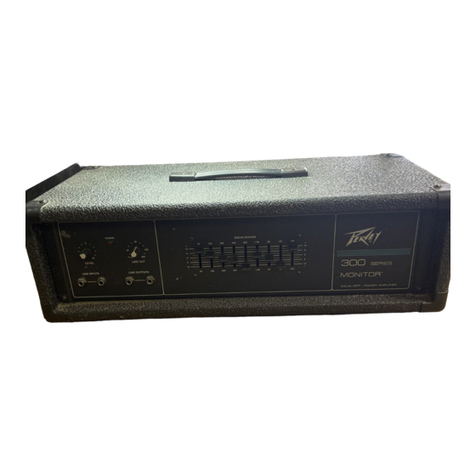
8
ULTRAVOICE DIGITAL VX2496
5. LIV APPLICATIONS WITH TH ULTRAVOIC DIGITAL
3) If necessary you can then smooth out the dynamics of the
vocal slightly with the opto compressor. Be sure not to
compress the signal too much the compressor can always
be used again after the recording. Also, do not use the
hard ratio function at this stage as it makes a very audible
difference in the signal. If the vocalist constantly changes
his distance from the microphone during recording, extreme
dynamic fluctuations may result. In this case, a higher
level of compression should be used. Keep the threshold
relatively low on the opto compressor to obtain a normal
volume level.
+T av id having t c mpress the signal t much,
try t maintain a c nstant distance between the
v calist and the micr ph ne while rec rding.
Backing vocals should be highly compressed so they can be
present throughout the recording without volume fluctuations.
4) The voice-optimized EQ allows you to equalize deficiencies
in the sound image that could not be corrected in advance.
However, do not use extreme settings here either, as you
can add more EQ when mixing. The voice-optimized EQ
can be used to deal with the following problems:
sIf the v cals s und muddy in the bass range, y u
can cut the l w-frequency area f the signal by using
the WARMTH c ntr l. Set the c ntr l t full cut and
l cate the intrusive frequency range with the TUNING
c ntr l s that the v ice s unds m re balanced.
Y u sh uld try this in s l m de first. Then, listen
t the v ice with the rest f the mix and adjust the
WARMTH c ntr l until the verall s und is right.
sIf the v ice s unds t edgy, use the ABSENCE butt n
n the v ice- ptimized EQ. This will attenuate these
harsh frequencies with ut c mpr mising the natural
quality f the verall s und. In additi n, y u can b st
the l w frequencies with the WARMTH c ntr l r, if
necessary, impr ve the peaky characteristic f the
signal by l wering the BREATH r PRESENCE c ntr l.
sIf the v ice is getting l st in the mix, increase the
PRESENCE c ntr l. B sting this range will help the
v ice t cut thr ugh m re.
sIf the v cal s und is n t brilliant en ugh, y u can
add peaks using either the PRESENCE r the
BREATH c ntr l. Additi nally, y u can use the
pt -c mpress r enhancer t add upper harm nics
artificially.
5) If the signal contains unwanted frequency areas, use the
expander and the opto de-esser to remove them. Sibilance
can be removed with the opto de-esser, but first you must
isolate the intrusive frequency range:
sActivate the v ice- ptimized EQ and turn the BREATH
c ntr l up t exaggerate sibilant frequencies. If y u
have already used the EQ, first make a n te f the
riginal settings s they can be subsequently reset.
sActivate the pt de-esser and, using a l w
thresh ld, turn the CUT FREQ c ntr l until the
sibilance is reduced.
sN w turn the v ice- ptimized EQ ff again and reset
the BREATH c ntr l t its riginal p siti n.
sN w set the thresh ld s the ACTIVE LED nly lights
up when sibilance is present.
The expander enables you to remove intrusive noise from
quiet passages. To do this, turn the THRESHOLD control to the
far left and turn it up slowly with DEPTH set at medium. Find the
value at which you notice an audible suppression of the quiet
spots without impairing the vocal sound.
Only use the gate in exceptional casesif, for instance, you
want to achieve a specific effect. It radically affects the sound
and could thus ruin your recording.
6) Use the tube emulation for a classic analog tape recording
sound.
7) Finally, use the MASTER FADER to regulate the
ULTRAVOICE DIGITALs output.
4. MIXING WITH THE
ULTRAVOICE DIGITAL
Go ahead and experiment with the mixing possibilities of the
ULTRAVOICE DIGITAL and push it to its limits. It is often the case
that extreme effect and filter settings are needed to optimally
integrate a signal into the mix. If a voice ultimately appears as
very full and present in the mix, it usually means the signal has
been thoroughly and truly tweaked.
Vocals usually have reverb added during the mix. If you notice
intrusive noise (e.g. sibilance) in the reverb, use the opto
de-esser to remove it as follows:
sRem ve the sibilance fr m the v cal as previ usly
described in chapter 3.5 and drive the reverb unit
via ne f the main utputs (n t via the INSERT path
as it is s urced bef re the de-esser). Make sure
the reverb unit is set t 100% wet, i.e. there is n
dry direct signal present.
sThe reverb signal can n w be mixed at the c ns le
with the signal fr m the VX2496s RECORDING utput.
This is s urced bef re the de-esser, and in this
way sibilance is rem ved nly fr m the reverb
signal, n t the main v ice itself.
The expander can be used to remove spill from other
instruments which, for example, may have been picked up by
the microphone from the vocalists headphones. Remember that
compression would have the opposite effect, as the signal is
limited at the loudest spots. Any spill would then become
effectively louder.
Although the ULTRAVOICE DIGITAL was principally designed
to record vocals, you can of course also use it to record and mix
other signals.
4.1 Hints about analog output level setting
The output level meter has been calibrated to +4 dBu. For Main
Out, this means the following: if OUTPUT LEVEL METER shows
0 dB, +4 dBu is connected to Main Out. This way, you have
positioned the optimal level of the output signal in order to create
maximum rejection with sufficient headroom.
Hint: Some equipment requires a lower input signal level
(-10 dBV in home recording domain). Use the input signal level
displays of such equipment as well as the output level control of
the VX2496 to create optimal adjustments.
4.2 Hints about digital output level setting
The maximum level for digital signals is 0 dBFS. If the OUTPUT
LEVEL-LEDs indicate +15 dB, this signal level is located at the
digital output of the VX2496. Always keep in mind that a signal
level higher than 0 dBFS/+15 dB will immediately lead to harsh
distortion. Therefore, we suggest that you always stay well
below this value in order to avoid distortion and increase
headroom for signal peaks.
+Please always make sure that the clip LED at the
input is seld m r never lit.
5. LIVE APPLICATIONS WITH THE
ULTRAVOICE DIGITAL
The ULTRAVOICE DIGITAL is a versatile problem-solver and
sound-shaper both in live and studio environments.
On a small stage, short distances between the microphone
and the monitor speaker can lead to unpleasant feedback. In this
case the VX2496 opto de-esser could be used to suppress
feedback:
sSet the THRESHOLD c ntr l relatively l w.
sUse the CUT FREQ c ntr l t find the frequency
causing the feedback.
sN w turn the thresh ld up far en ugh t eliminate
the feedback while maintaining an unaffected v cal
signal as much as p ssible.

